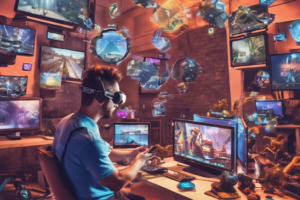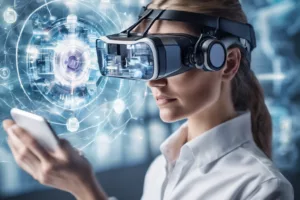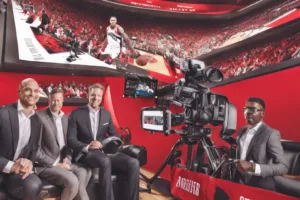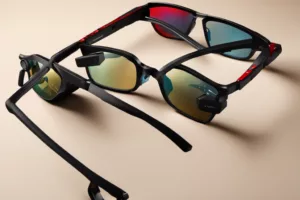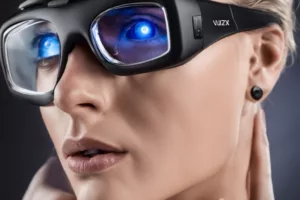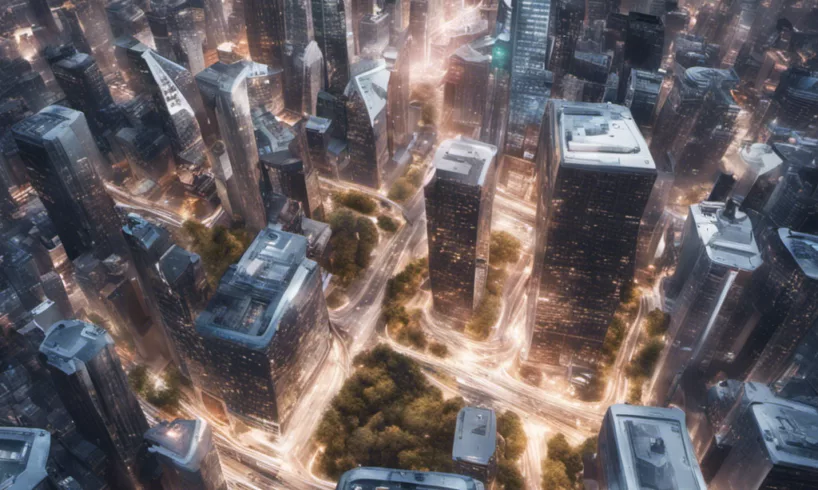
Psychic VR's ambitious project CityXR aims to transform cities into immersive augmented realities, but faces challenges in achieving its vision.
In 2016, designer and filmmaker Keiichi Matsuda released a thought-provoking concept film called Hyper-Reality, which depicted a future where physical and virtual realities merge, resulting in a city saturated with media. This film, though nearly a decade old, continues to be relevant in discussions surrounding the potential of virtual and augmented reality technologies. Fast forward to the present day, and I found myself on a media tour in Japan with Psychic VR, a Tokyo-based VR/AR start-up, where they presented their ambitious project called CityXR. This project envisions augmented cities that resemble the dystopian world depicted in Hyper-Reality. However, as I explored the various ideas presented by Psychic VR, it became clear that CityXR faces challenges in realizing its vision.
Air Race X and the Potential of Styly
Air Race X, one of Psychic VR's projects, showcased the potential of their technology to reinvent competitive sports through immersive experiences. However, the lack of occlusion during the final race detracted from the overall experience. The core technology behind Air Race X runs on Styly, a platform that serves as the foundation for all of Psychic VR's projects, including CityXR. Styly is an all-in-one tool that empowers creators and consumers to explore augmented reality. With CityXR, Psychic VR aims to transform cities like Tokyo into immersive playgrounds by adding augmented content to physical spaces. The vision includes social, music, game, and art layers that users can switch between, creating a new form of entertainment that extends the city space itself into an experiential media.
The Challenge of Augmented Reality Adoption
The success of CityXR relies heavily on the widespread adoption of VR/AR technology. The vision of augmented reality layers in physical spaces is reminiscent of Magic Leap's earlier days. However, Magic Leap faced challenges and laid off many employees. Despite this, Psychic VR has managed to secure investments from media companies, telecom carriers, and real estate companies, indicating that they have convinced investors that their vision is within reach. While basic examples of CityXR are already operational through mobile AR, the hope is for more immersive experiences viewed through true AR glasses.
Geographic-Based AR Content and Competition
Psychic VR's CityXR concept relies on geographic data provided by the Japanese government to create augmented reality experiences that seamlessly integrate with real-world surroundings. This approach is similar to Niantic's visual positioning system for ‘global scale' AR experiences. However, Niantic recently laid off employees, though they remain committed to building for future AR glasses. During my visit to Psychic VR, I had the opportunity to create my own Styly AR experience, which accurately placed virtual objects in Shibuya Crossing using mobile AR. Psychic VR recognizes the importance of user-generated content and has launched the NEWVIEW project to encourage and educate creators in fashion, music, film, and more.
Monetizing CityXR and the Future of Augmented Cities
Monetizing CityXR presents a challenge for Psychic VR. While user-generated content has potential, it requires a large pool of creators to be truly viable. On the other hand, aspects like virtual billboard ads, transaction-focused games, and the commodification of attention and physical space offer more natural routes to monetization. However, this raises concerns about the overwhelming presence of advertising in augmented reality, reminiscent of the cautionary tale depicted in Hyper-Reality. Psychic VR's vision for CityXR aims to strike a balance between user-created art and immersive experiences and the interests of media companies and corporations.
Psychic VR's CityXR project holds great promise for the future of augmented cities, but it also faces challenges in realizing its vision. The company's use of Styly and geographic-based AR content demonstrates their commitment to creating immersive experiences that seamlessly integrate with real-world surroundings. However, the lack of occlusion and the need for widespread adoption of VR/AR technology are hurdles that need to be overcome. Additionally, the monetization of CityXR raises questions about the balance between user-generated content and corporate interests. As we navigate the future of augmented reality, it is crucial to learn from cautionary tales like Hyper-Reality and ensure that the potential of this technology is harnessed responsibly.

Alejandro Rodriguez, a tech writer with a computer science background, excels in making complex tech topics accessible. His articles, focusing on consumer electronics and software, blend technical expertise with relatable storytelling. Known for insightful reviews and commentaries, Alejandro's work appears in various tech publications, engaging both enthusiasts and novices.
Follow us on Facebook


